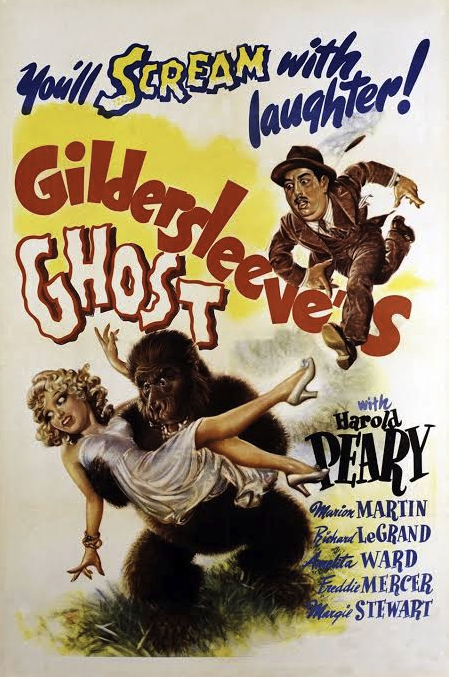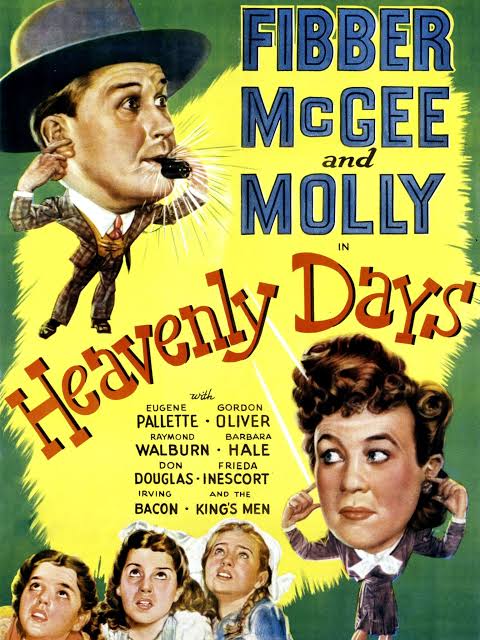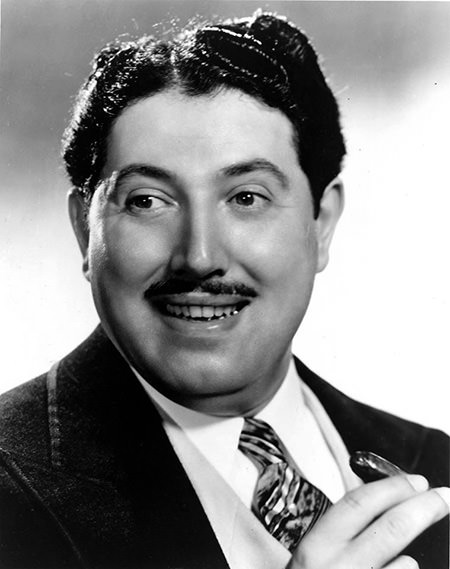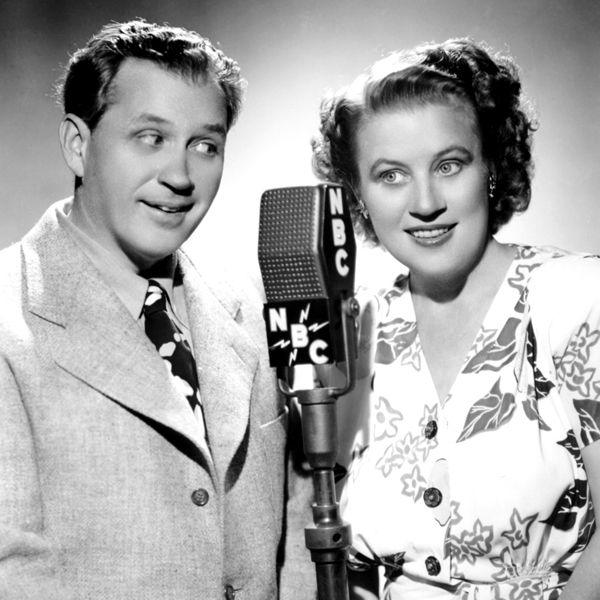
Guildersleeve’s Ghost is an imperfect film that illustrates a perfect union: radio and the movies. Movies came first. The first transatlantic radio signal was sent in 1901, and the first radio broadcast for ‘entertainment’ purposes occurred in 1910. Preceding this was the first public projection of a moving image in 1895, followed with the first American motion picture, the 12-minute The Great Train Robbery in 1903, and the release of the first multi-reel, feature-length film in 1906 (The Story of the Kelly Gang).
Movies were always in need of story ideas, and a natural place to look was the great radio shows of the medium’s early days. One program seemed especially blessed: Fibber Magee and Molly. It debuted in 1935 with real-life married couple Jim and Marian Jordan providing the voices. The show ended on radio in 1959, and there would be a brief television program not featuring the Jordan’s in 1959-60.
At the height of the program’s popularity, there were four Hollywood movies that included or featured the famous couple: This Way Please (1937), Look Who’s Laughing (1941), Here We Go Again (1942) and Heavenly Days (1944).

An early ‘first’ credited to the radio program is its “spinoff.” One of the most popular supporting characters was Throckmorton P. Gildersleeve, performed by Harold Peary. Gildersleeve was so popular that he was given his own show in 1941, “The Great Gildersleeve.”
Gildersleeve was the opposite of the laid-back McGee and his common-sense wife Molly. He was also the McGees’ next-door neighbor. This set up the comic dynamic of constant bickering between the two men. Invariably, Fibber would have the last word, to which Gildersleeve would respond, “You’re a ha-a-a-ard man, McGee!” Peary the actor possessed a cunning laugh, which became synonymous with the character itself. The laugh seemed to say “We’ll see about that.” Gildersleeve the character was overblown but articulate. He often introduced his actions with some famous quote: “… may there be no moaning of the bar, When I put out to sea.” In short, Peary created a new and interesting character: the learned windbag who was often clueless to his own shortcomings but at heart a good fellow: the pompous fool.



The ‘character’ of Throckmorton P. Gildersleeve was too big for one radio program. With time, it expanded into four movie appearances, numerous cartoon interpretations, at least one involving Bugs Bunny (“One Ham’s Family” (1943/MGM), and ultimately television in 1954-56. Of the movies, the last one, and possibly the weakest, is 1944’s Gildersleeve’s Ghost (see calendar). Other titles, both from 1943, were RKO’s The Great Gildersleeve and Gildersleeve’s Bad Day.
THE GREAT GILDERSLEEVE remained on NBC Radio until 1958. Peary, however, left the series in 1950, lured to CBS as part of an ongoing series of “talent raids.” To replace the character’s great originator, NBC hired Willard Waterman, who smoothly stepped into the title role without diminishing the show’s popularity. Peavy and Waterman closely resembled each other with similar voices and mannerisms. The radio program expanded to television from 1954-56, again starring Waterman.
